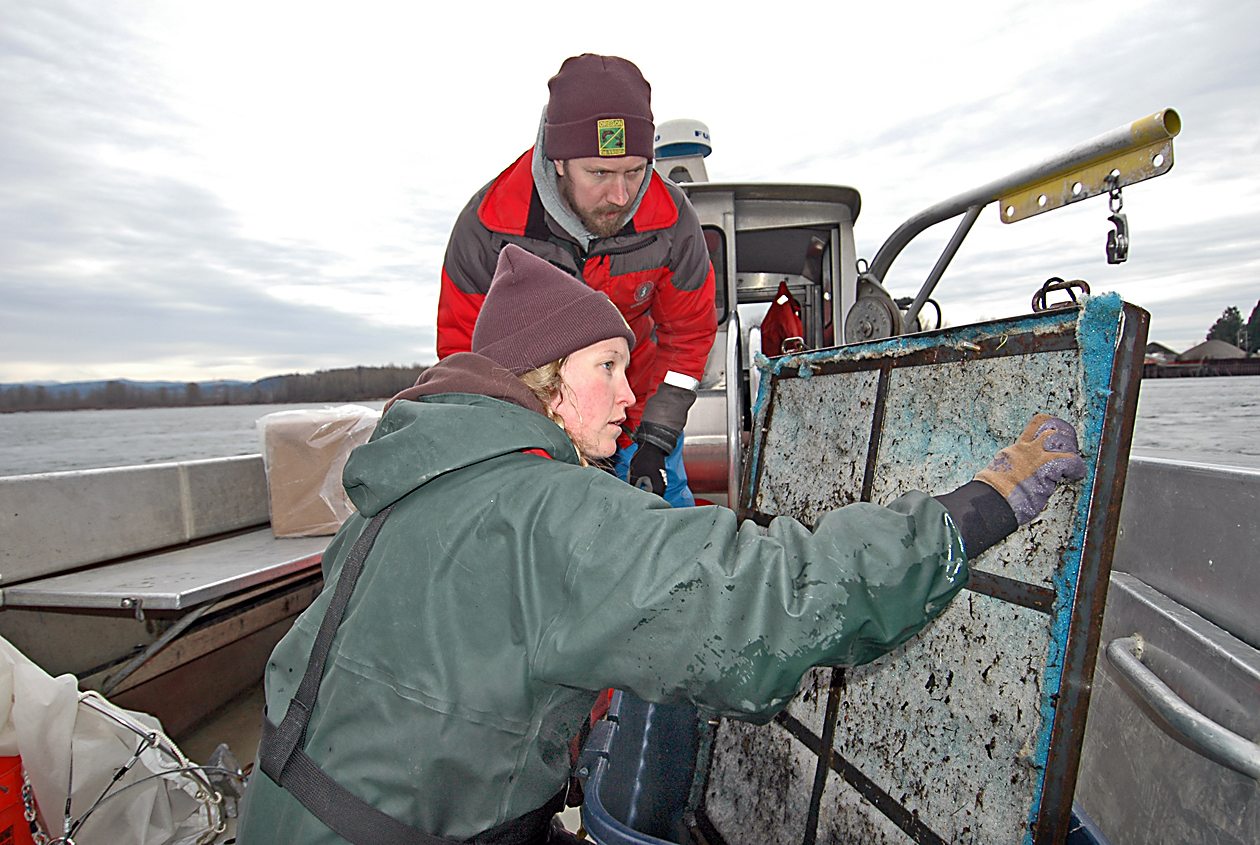TROUTDALE, Ore. — Oregon officials are watching for a smelt run in the Sandy River this spring following a relatively large return in the Cowlitz River.
Listed as threatened under the federal Endangered Species Act, smelt are off-limits to sport and commercial harvest.
“We want to make sure people remember that smelt are now protected and need to be left alone,” said Danette Faucera, assistant fish biologist for the Oregon Department of Fish and Wildlife. “Smelt arrive in waves, and in the past when one was seen in the Sandy River within hours lots of people were fishing for them. We want to make sure that doesn’t happen if the smelt show up in the Sandy this year.”
Smelt also are called eulachon.
Once so abundant they were caught by the bucket load with dip nets, eulachon numbers have dropped precipitously since the 1940s when they entered the Columbia in such large numbers they literally choked tributaries like the Cowlitz and Sandy river with tremendous silvery schools of migrating fish.
Their ability to reproduce in large numbers – one 6- to 8-inch adult female can produce up to 40,000 eggs – is crucial to their survival since they are prey for many other species.
Monitoring smelt is harder with the closure of fishing.
“With the close of smelt fisheries we lost a tool that has been used to follow abundance trends for decades,” said Tom Rien, Oregon’s Columbia River Coordination Program manager. “So we must now use other monitoring to track trends in abundance.”
Biologists now generate population estimates by measuring smelt eggs and larvae, which are collected at multiple points along the Columbia River from Bonneville Dam downstream for 105 miles to Westport. Ore.
Twice a week, an Oregon research vessel moves up and down the river lowering and raising a fine mesh net shaped like an airport wind sock to collect eggs and larvae that are virtually invisible to the naked eye.
Researchers also retrieve eggs from mats laid out on the bottom of the river. The mats, which look like furnace filters, are designed to catch the microscopic eggs as they settle on the river bottom.
Tethered to bright orange buoys, the mats are pulled from the river floor onto the research boat and flushed with river water to wash the eggs into containers that can be taken back to the lab for analysis.
The Cowlitz Tribe, which is doing smelt research in the Cowlitz River, conducted a test fishery this year and confirmed a relatively large run.
Cowlitz biologists also are doing research in the Sandy River.
“Smelt are a pivotal species in the Columbia River,” said Erick VanDyke, eulachon fisheries project leader. “They sustained Native American populations during the winter and are forage for many animals.”
Scientists don’t know, for example, how smelt find their way back from the ocean and why runs can be large one year and small the next.



